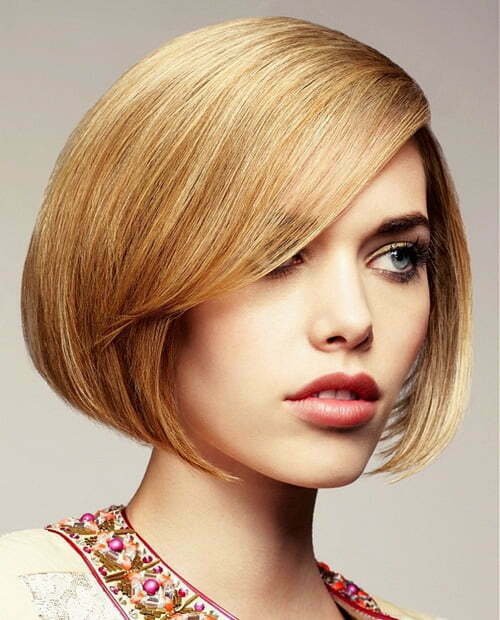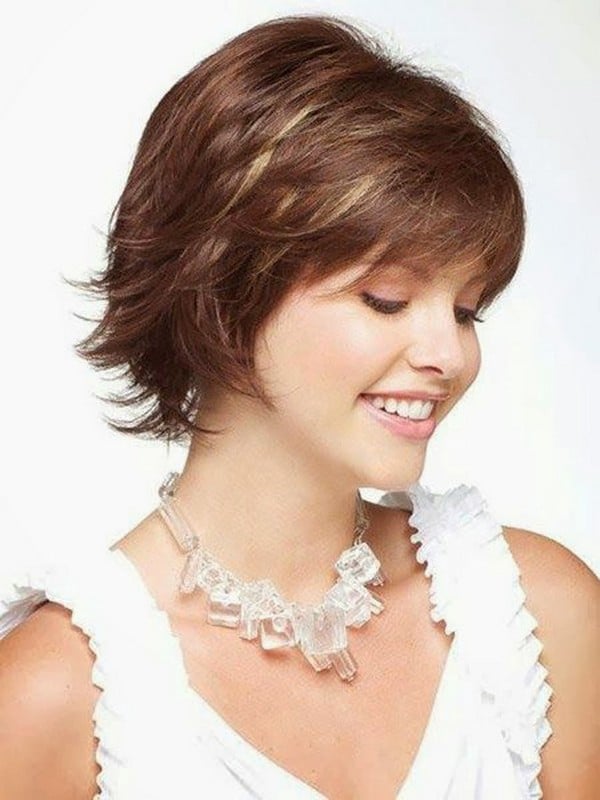 Latest short hairstyles for women 2015http://gvenny.com/images/latest-short-hairstyles-for-women-2015/latest-short-hairstyles-for-women-2015-94.jpg
Latest short hairstyles for women 2015http://gvenny.com/images/latest-short-hairstyles-for-women-2015/latest-short-hairstyles-for-women-2015-94.jpg
Modern Short Hairstyles For Women
A hair, hairdo, or haircut identifies the styling of mane, on the individual head usually. Sometimes, this may indicate an editing of beard hair also. The fashioning of hair can be viewed as an aspect of personal grooming, fashion, and cosmetics, although practical, cultural, and popular things to consider influence some hair styles also. The oldest known depiction of hair braiding dates back about 30,000 years. In ancient civilizations, women's scalp was often elaborately and carefully dressed in special ways. In Imperial Rome, women wore their locks in complicated styles. From the time of the Roman Empire[citation needed] before Middle Ages, majority of the women grew their mane so long as it would in a natural way expand. Through the Roman Empire as well as in the 16th century under western culture, women commenced to wear their hair in extremely ornate styles. Within the later half of the 15th century and on in to the 16th century an extremely high hairline on the forehead was considered attractive. During the 15th and 16th generations, European men wore their wild hair cropped no longer than shoulder-length. In the early 17th century male hairstyles grew longer, with waves or curls being considered desirable.
The male wig was pioneered by Ruler Louis XIII of France (1601-1643) in 1624. Perukes or periwigs for men were presented into the English-speaking world with other French styles in 1660. Late 17th-century wigs were lengthy and wavy, but became shorter in the mid-18th century, by which time they were normally white. Short hair for fashionable men was something of the Neoclassical movement. In the first 19th century the guy beard, and moustaches and sideburns also, made a strong reappearance. From your 16th to the 19th century, European women's head of hair became more obvious while their scalp coverings grew smaller. In the middle of the 18th century the pouf style developed. Through the First World Warfare, women around the global world started to shift to shorter hairstyles that were simpler to manage. In the early 1950s women's hair was generally curled and worn in a variety of styles and lengths. In the 1960s, a lot of women commenced to wear their head of hair in short modern cuts such as the pixie cut, within the 1970s, wild hair tended to be much longer and looser. In both the 1960s and 1970s a lot of men and women wore their hair lengthy and straight. Inside the 1980s, women pulled back their hair with scrunchies. Through the 1980s, punk hairstyles were followed by some interpersonal people.
Throughout times, people have worn their locks in a multitude of styles, determined by the fashions of the culture they are in largely. Hairstyles are signifiers and markers of social class, age, marital status, racial identification, political beliefs, and attitudes about gender.
In many cultures, for religious reasons often, women's scalp is protected while in public, and in some, such as Haredi Judaism or Western european Orthodox neighborhoods, women's mane is shaved or lower very short, and covered with wigs.Only because the end of World War I have women begun to wear their locks brief and in pretty natural styles.
Paleolithic
- The oldest known duplication of scalp braiding lies back again about 30,000 years: the Venus of Willendorf, known in academia as the Woman of Willendorf now, of a lady figurine from the Paleolithic, approximated to get been made between about 28,000 and 25,000 BCE.The Venus of Brassempouy matters about 25,000 years old and indisputably shows hairstyling.
Bronze Age
- In Bronze Age razors were known and in use by some men, but not on a daily basis since the method was rather unpleasant and required resharpening of the tool which reduced its endurance.
Ancient history
- In early civilizations, women's scalp was often elaborately and carefully dressed in special ways. Women colored their scalp, curled it, and pinned it up (ponytail) in many ways. They set their wild hair in waves and curls using wet clay, that they dried out in the sun and then combed out, if not by using a jelly manufactured from quince seed products soaked in drinking water, or styling tongs and styling irons of various kinds.
Roman Empire and DARK AGES
- Between 27 BC and 102 Advertisement, in Imperial Rome, women wore their hair in complicated styles: a mass of curls at the top, or in rows of waves, drawn back into ringlets or braids. Eventually noblewomen's hairstyles grew so complex that they required daily attention from several slaves and a stylist to become maintained. The head of hair was often lightened using timber ash, unslaked lime and sodium bicarbonate, or darkened with copper filings, oak-apples or leeches marinated in vinegar and wine beverages. It was augmented by wigs, pads and hairpieces, and held in place by nets, pins, pomade and combs. Beneath the Byzantine Empire, noblewomen covered the majority of their hair with silk pearl and caps nets.
Best HAIRSTYLES For Short Hair Women
- It is vital to find the best short hairstyles for girls since it performs an enormous part of your style. Getting the right hairstyle provides you with pleasure and positive thoughts. Find out which hairstyle is simply perfect for your character and personality. You should also consult your hairstylist before having a new haircut. After all, changes are great and additionally, it may add positive outlook in your daily life. Feel absolve to browse our assortment of short hairstyles for females and choose the the one which your like best.
Short Haircuts for Women Modern Magazin
 http://modernmagazin.com/wp-content/uploads/2015/03/short-haircuts-for-women-2015-1.jpg
http://modernmagazin.com/wp-content/uploads/2015/03/short-haircuts-for-women-2015-1.jpgWomen Short Hairstyles 2015 2016 Most Popular Short Hairstyles
 http://www.short-haircut.com/wp-content/uploads/2013/02/Modern-short-straight-haircuts.jpg
http://www.short-haircut.com/wp-content/uploads/2013/02/Modern-short-straight-haircuts.jpgModern Short Hairstyles For Women
 http://beautifieddesigns.com/wp-content/uploads/2015/12/modern-short-hairstyles-for-women.jpg
http://beautifieddesigns.com/wp-content/uploads/2015/12/modern-short-hairstyles-for-women.jpgModern Very Short Haircuts For Women BenHairStyle.com
 http://benhairstyle.com/wp-content/uploads/2015/01/modern_very_short_haircuts_for_women.jpg
http://benhairstyle.com/wp-content/uploads/2015/01/modern_very_short_haircuts_for_women.jpgOIP.M0796e83c1a1c132c957ab624f61e4491o0
49502219E983A9A89D9ED344899637D0E110D0C1D1http://gvenny.com/latest-short-hairstyles-for-women-2015/
Embed Our image to your website
ThumbnailImageEmbed Our image to a Forum
ThumbnailImage








.jpg)
.jpg)

